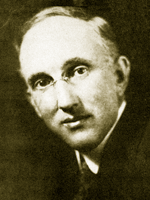 Every so often, an artifact saved for one purpose becomes a valued clue to another! Case in point, a birthday-gifted copy of the Silverton Appeal-Tribune from August 5, 1982. It was saved for it’s coverage of that year’s Homer Davenport Days, the second annual celebration under that name. That year, the International Cartoon Contest was added. And the following article appeared high-lighting another famous Silverton Country cartoonist, Davenport’s cousin Frank S. Bowers.
Every so often, an artifact saved for one purpose becomes a valued clue to another! Case in point, a birthday-gifted copy of the Silverton Appeal-Tribune from August 5, 1982. It was saved for it’s coverage of that year’s Homer Davenport Days, the second annual celebration under that name. That year, the International Cartoon Contest was added. And the following article appeared high-lighting another famous Silverton Country cartoonist, Davenport’s cousin Frank S. Bowers.
The question implied by the article is where are Mr. Bower’s drawings? After over 36 years since this article’s publication, many different volunteers have come and gone. The collection has continued to increase, as has our space. But as our current “excavations” in the museum’s basement have revealed, there is much much more to learn about the Silverton Country’s rich and unique history, than what we already know. As we uncover more about Mr. Bowers and other historical tid-bits, we will add them here!
Museum’s Cartoon Room Gets Facelift by Volunteers
Through the efforts of the Silverton Zenith Women’s Club the Homer C. Davenport-Frank S. Bowers cartoon room at the Silverton Country Museum received a major facelift during July. Club members Jeanette Olafson, Sandi Rawie, Nola Stark, Louise Vachter and Jeanette Zastoupil painted the room and provided new shades and curtains.
The room contains more than 50 of Bowers’ pen and ink drawings, his drawing table, photos and the suit he wore to President Theordore Roosevelt’s inauguration on March 4, 1905. Dewey R. Alien of Silverton acquired many of the items from Bowers before the cartoonist’s death in 1955.
Bowers, a cousin of Davenport, was a son of Mantie Geer and Phillip Bowers. He was born in 1873 at the family home which is still standing in the Waldo Hills.
Bowers left for San Francisco in about 1900 where he replaced Davenport as political cartoonist for newspaper tycoon William Randolph Hearst Sr. Later, before being summoned to New York by Hearst to again replace Davenport, he returned to the Silverton Country to take Carrie Virginia Anderson as his bride.
Finally, Bowers left Hearst and went to work for the Indianapolis News until 1913 when he was slowed by illness. Many of the drawings at the museum were completed during this time. The cartoons concern such subjects as inflation, the Panama Canal Zone, wheat shortages, corruption at Standard Oil, the Mexican revolution and exploration of the Alaskan interior.
In 1913 Bowers moved to Gold Hill and eventually to the Pratum area where he lived until his death. He and his wife are buried at the Mount Hope Cemetery in the Waldo Hills.
Many of the Davenport items displayed in the room were provided by Gus Frederick of Silverton. This year Nadeene Bachler Skaife of Silverton donated a rare autographed portrait of Davenport addressed to the Silverton Social Club.
